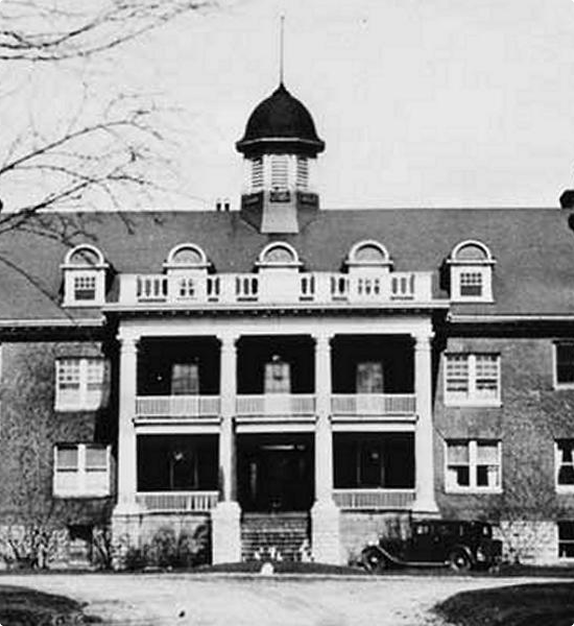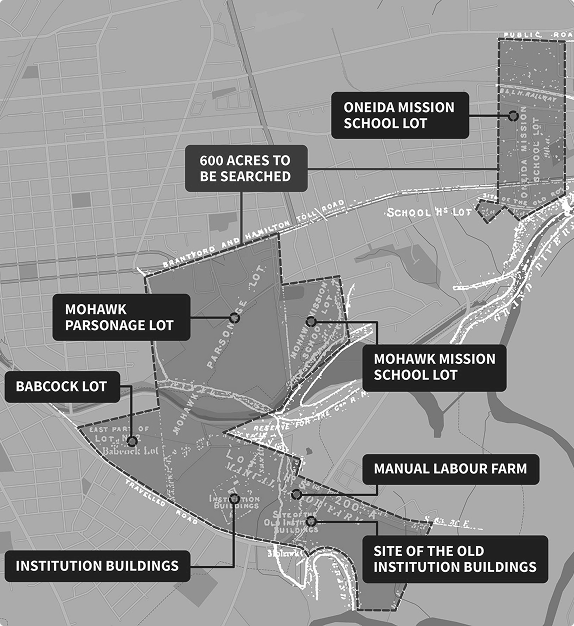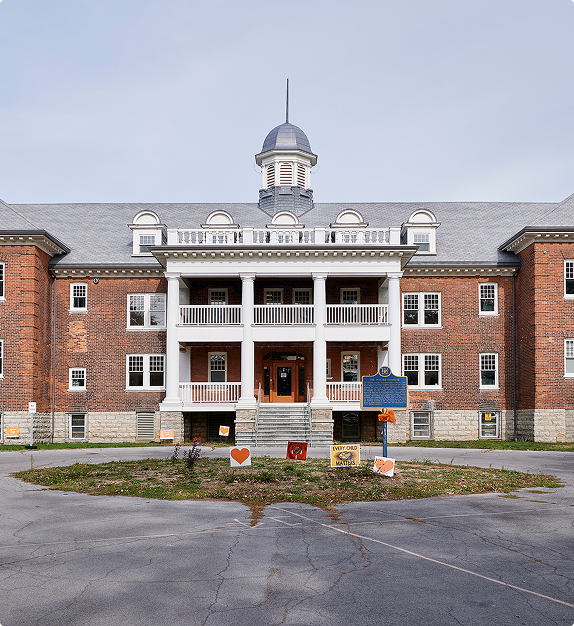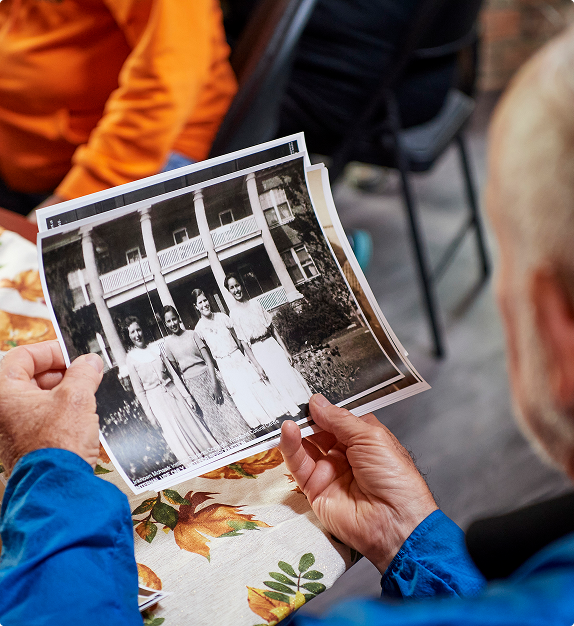
Heading 1
The Mohawk Institute Indian Residential School is known as the longest-running and largest Indian Residential School in Canada. It is estimated that 15,000 of the 150,000 (1 in 10) children who attended an Indian Residential School in Canada attended the Mohawk Institute. The institute is located within the city limits of Brantford, Ontario on property held by Six Nations of the Grand River. Today, a significant portion of the institute's former 600+ acres is located in the City of Brantford on lands held by both the municipality and private owners.

Establishment of the Mohawk Institute
The Mohawk Institute operated for 140+ years before closing on June 27, 1970. The exact timeline of when the school opened is often debated as early missionary schools existed on the adjacent property prior to the opening the Mohawk Institute Mechanical Schools for Boys in 1828 which later accepted both boys and girls in 1836.
The institution was first established by the New England Company, a British Anglican Missionary Society. Operations were later assumed by the Canadian Government in 1929, although Anglican influence was still asserted over the institute until its closing. This is evident through the appointment of an Anglican principal each year and the requirement that every student attend service at His Majesty's Royal Chapel of the Mohawks (constructed in1785).

Residential Schools in Canada
The Mohawk Institute was part of Canada's Indian Residential School system, designed to assimilate Indigenous children by severing their ties to culture, language, and traditions. Although many schools started as an optional program for Indigenous youth, an amendment to the Indian Act in 1894 made attendance at these schools or a federal day school mandatory. Thousands of Indigenous children were forced to leave their families, often with the involvement of government officials and the Royal Canadian Mounted Police (RCMP). While some families requested enrollment, many children were taken without parental consent, and those who resisted faced imprisonment.

Remembering the Children
Each year, between 90 to 200 Indigenous children were forced to attend the Mohawk Institute. The Survivors' Secretariat has been able to identify children who attended the institute from at least 60 communities and 2 geographic regions (James Bay and Hudson Bay). The farthest a child has been recorded to have been sent to Mohawk Institute was from Saddle Lake First Nation in Alberta which is over 3,100 km away from their family and community.
Heading 1
The Mohawk Institute Indian Residential School is known as the longest-running and largest Indian Residential School in Canada. It is estimated that 15,000 of the 150,000 (1 in 10) children who attended an Indian Residential School in Canada attended the Mohawk Institute. The institute is located within the city limits of Brantford, Ontario on property held by Six Nations of the Grand River. Today, a significant portion of the institute's former 600+ acres is located in the City of Brantford on lands held by both the municipality and private owners.
Establishment of the Mohawk Institute
The Mohawk Institute operated for 140+ years before closing on June 27, 1970. The exact timeline of when the school opened is often debated as early missionary schools existed on the adjacent property prior to the opening the Mohawk Institute Mechanical Schools for Boys in 1828 which later accepted both boys and girls in 1836.
The institution was first established by the New England Company, a British Anglican Missionary Society. Operations were later assumed by the Canadian Government in 1929, although Anglican influence was still asserted over the institute until its closing. This is evident through the appointment of an Anglican principal each year and the requirement that every student attend service at His Majesty's Royal Chapel of the Mohawks (constructed in1785).
Residential Schools in Canada
The Mohawk Institute was part of Canada's Indian Residential School system, designed to assimilate Indigenous children by severing their ties to culture, language, and traditions. Although many schools started as an optional program for Indigenous youth, an amendment to the Indian Act in 1894 made attendance at these schools or a federal day school mandatory. Thousands of Indigenous children were forced to leave their families, often with the involvement of government officials and the Royal Canadian Mounted Police (RCMP). While some families requested enrollment, many children were taken without parental consent, and those who resisted faced imprisonment.
Remembering the Children
Each year, between 90 to 200 Indigenous children were forced to attend the Mohawk Institute. The Survivors' Secretariat has been able to identify children who attended the institute from at least 60 communities and 2 geographic regions (James Bay and Hudson Bay). The farthest a child has been recorded to have been sent to Mohawk Institute was from Saddle Lake First Nation in Alberta which is over 3,100 km away from their family and community.



